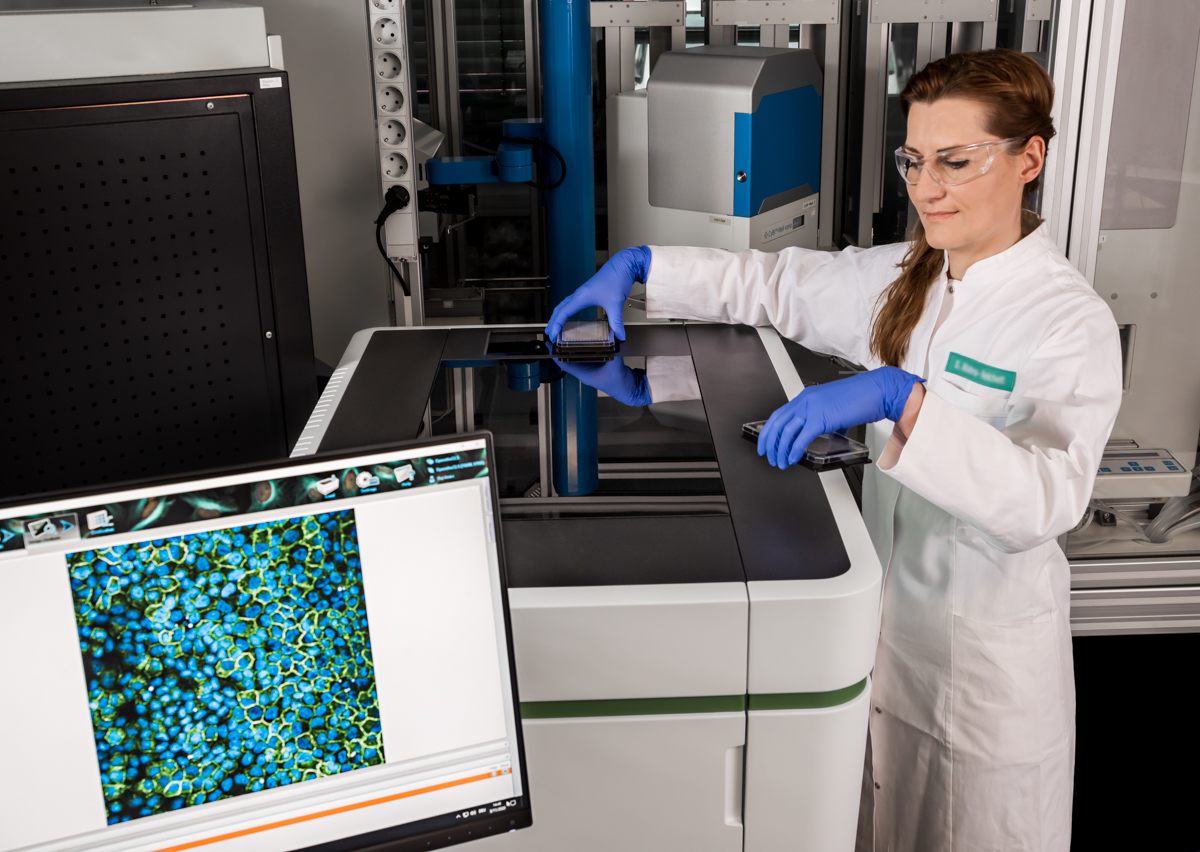Development of a drug screening pipeline for discovery of novel COVID-19 therapeutics
Currently, there are no effective drugs available to fight SARS coronavirus-2 (SARS-CoV-2) and the associated disease, COVID-19. The working group on High-Throughput Drug and Target Discovery at Fraunhofer ITEM in Regensburg is cooperating with partners from the University of Regensburg and the company 2bind GmbH, aiming to identify drug candidates that specifically inhibit packaging of the SARS-CoV-2 genome into virus particles and thereby prevent replication of the virus. The project will be funded by the Bavarian Research Foundation for a period of one year, starting in December 2020.

Packaging of the viral genome is an essential process in the viral life cycle, during which the nucleocapsid protein (N-protein) specifically binds to the viral genomic RNA and organizes its packaging into viral particles. Specific RNA binding and dimerization domains of the N-protein are crucial for the packaging of SARS-CoV-2. The project partners will develop a series of target- and cell-based assays and perform high-throughput compound screens to identify selective small molecules targeting the RNA binding and dimerization domains. The functional effects of these molecules on RNA binding, dimerization and packaging will be analyzed using biophysical methods and their impact on SARS-CoV-2 replication and infectivity in cellular models will be directly visualized and measured. This intertwined “screening pipeline” will thus enable rapid and targeted identification of novel active small-molecule compounds that inhibit SARS-CoV-2 replication.
Fraunhofer ITEM researchers will screen some 16,000 compounds in cellular assays for their effects on virus replication and particle release. To this end, they will use three different compound libraries: a bioactive “drug repurposing” compound library comprising 2645 approved and investigational drugs, a “focused library” with some 1500 compounds which, selected by an in silico "docking screen" from 2.5 million active compounds, inhibit the interaction of N-protein and RNA, and a library containing 12,000 molecules representing a selection from the complete maximum physicochemical diversity library of over 125,000 drug-like compounds.
The researchers will characterize and validate the identified drug candidates in more detail by using replicating virus cultures. In interdisciplinary groups, the partners will strive to gain new fundamental insights into SARS-CoV-2 RNA packaging and viral particle release and will develop novel methods for analyzing RNA secondary structures as potential novel drug targets. The active compounds to be identified have the potential to be further developed into first-in-class COVID-19 therapeutics targeting the N-protein, drugs that would be of high global economic interest and great societal benefit. In addition, a basis for treating diseases caused by other RNA viruses will be provided as a result of this research.
 Fraunhofer Institute for Toxicology and Experimental Medicine
Fraunhofer Institute for Toxicology and Experimental Medicine